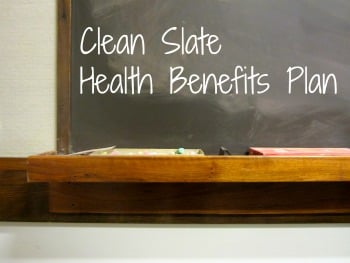 ANTHONY FIORETTI
ANTHONY FIORETTI
HNI Chief Benefits Officer
We recently performed a thought-provoking exercise at HNI. Our benefits team took a shot at designing the ideal health care plan, pretending they were an employer who wanted maximum cost efficiency, while keeping employees happy with their benefits. If they were starting today, from a clean slate, what would their health plan look like?
More than anything, the clean slate plan would need to satisfy two criteria:
1.) It would provide employees with awesome care and options. Employers who don't offer competitive benefits can't compete for or keep the best talent in their industries.
2.) It would be as waste-free and good for the bottom line as possible. Funds that get lost in health care spending can't provide value to other parts of the business.
With those two criteria in mind, here's how Team Benefits would build a clean slate plan:
Physician Care
Physician services would be provided through a retainer-based direct primary care (DPC) model and be provided to employees for little or no cost. This "company doctor” would see fewer patients (compared to other primary care docs) in order to spend more time with each person to help them better understand how they can improve their health. DPC doctors would be available 24/7 via email and phone and offer complete care coordination and advocacy. The DPC resource would also make available telemedicine services to serve as a stand-in when the regular doctor is absent or to connect with patients in urgent situations or when they are on the road.
The clean slate plan would include higher co-pays for specialists and other urgent care. The idea is that a dedicated doctor should help employees manage their health to such a point that specialists are rare expenses. The DPC doctor would be the patient advocate and make sure that the services delivered outside of their domain are referred to the highest quality providers.
Prescription Drugs
The clean slate plan would provide low-cost access to generic drugs and other prescriptions that have been proven to treat chronic diseases effectively (these would be meds for diabetes, high cholesterol, etc.). All other retail dispensing would involve special deductibles or coinsurance to incentivize the patient to use the lower-cost options and mail service for maintenance drugs. Specialty meds would be available from a single pharmacy that buys these high cost meds at the best price possible.
Common Procedures and Tests
The clean slate plan would include reference-based pricing or it would include a domestic tourism incentive to ensure value for the most common procedures and tests. Reference-based pricing limits benefits to a specific dollar amount for procedures where significant price variation exists. The idea is to dissolve some of those opaque pricing practices that the health care system is famous for. When employees and their employers can make more decisions based on value, the health care system will be forced to get more competitive.
Complex Cases
Tricky cases would be turned over to centers of excellence (think Cleveland Clinic, Mayo Clinic, and the like). An alternative would be to have an expert physician review your diagnosis and care plan to make sure it’s right before proceeding. Getting the best brains working on a tough case right away should shorten duration and severity, which is good for both the patient (employee) and the employer's bottom line. There's no out of network; you only go with folks who are proven.
Other Cost-Sharing Provisions
Within the clean slate program, multiple deductible options could be provided — with higher deductible plans coupled with health incentive accounts tied to wellness participation or outcomes. Out-of-pocket maximums, however, would be set at the highest allowable level across the board to ensure that incentives remain to evaluate cost and quality as part of all care decisions. Financial rewards will continue even for those that exceed their annual OOP maximums through reductions in future limits or additional contributions to their health accounts. Again, another win for employees and employers.
The Outcome? Major Savings for Employers, Employees
To recap, here are the building blocks of the clean slate plan:
• Direct primary care based on a limited patient panel
• Low-cost access to high value prescriptions
• Reference-based pricing for common procedures
• Use of the highest quality providers and centers of excellence
• Engaged consumers every step of the way
These building blocks tie back to those two criteria — exceptional care and benefits for employees (patients) and cost savings for employers. And you've probably noticed that the clean slate plan emphasizes personalized and early care to prevent acute problems from transforming into expensive, chronic conditions. Because it maximizes consumer engagement and drives waste from the system, this type of plan likely would cost between 20 percent and 30 percent less than traditional models — and would stay there.
What elements of the clean slate plan are most interesting to you? If you were starting from a clean slate, what would your plan look like? Please sound off in comments!
Related Posts:
Health Care Reform Timeline for Employers: Where We're Going
2 Real World Examples of ACA-Compliant Wellness Programs
What Public Exchanges are Doing to Employer-Sponsored Health Coverage
How to Help Employees Navigate Obamacare
.png?width=69&height=53&name=Acrisure%20Logo%20(White%20Horizontal).png)

